iPhone 7 vs iPhone 6: What’s the difference?
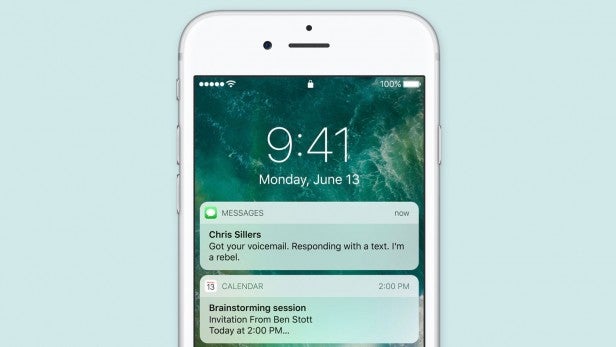
iPhone 7 vs iPhone 6: Comparing the specs
If you own an iPhone 6 then you’re probably ready for a change. Whether you bought one two years ago when it first came out, or later on, the gadget world has moved on.
But is the iPhone 7 a serious enough upgrade to make it worthwhile, or are you better off waiting for next year or even switching to Android?
With Apple bumping the UK prices up significantly with this year’s model (thanks Brexit), starting from £599 for the 32GB model, many will likely be thinking twice about a like-for-like upgrade. Should they be?
WATCH: iPhone 7 vs iPhone 7 Plus – What’s the difference?
iPhone 7 vs iPhone 6 – Design
We’re not judging you, but sometimes you just want something shiny and new. That’s fine. But the iPhone 7 doesn’t look that different to the iPhone 6 you already own. Apple’s ditched the unsightly antenna lines on the back, but since you’ve had your phone a while now you’ve probably got used to them.
What’s 100% new are the colours, which include a limited-availability piano black and a rather fetching ‘Black’ option. The latter replaces the Space Grey option and, my oh my, does it look fine. Is that a good reason to upgrade? Not on its own it’s not.
Another new element is the way Apple has integrated the camera module in the iPhone 7. The iPhone 6 (and its successor, the iPhone 6S) attracted criticism for the inelegant way it handled having a camera that didn’t quite fit its body. Apple has fully embraced that bump in the iPhone 7. In fact, the company has accentuated it with a grand curved surround.

The home button – which most can agree was a regular point of hardware failure in older iPhones – has been swapped for a new solid-state button with haptic feedback standing in for a physical click. Some have bemoaned the lack of tactility in the new solution, but we have gotten used to the iPhone 7’s approach rather quickly.
Besides, the solid home button contributes to a new IP67 rating. This means the iPhone 7 can survive immersion in water for 30 minutes down to a depth of one metre. It’ll survive a drop into a puddle or two, and you could even take photos underwater. It’s dust resistant, too.
Whether you care about this probably comes down to your own personal experience. If you’ve lost a phone to the drink in the past, water resistance will probably feel like a sorely needed feature. Personally, I’ve lived for years without a water-resistant phone, so it’s not something on my personal must-have list, but the clumsier members of the team have cause think it’s great.
Speaking of nice-to-have extras, Apple’s added stereo speakers to make up for loss of the headphone jack. We didn’t find the degree of stereo separation particularly impressive, and they’re lacking in bass, but it’s a definite improvement over the iPhone
Related: Best Bluetooth headphones
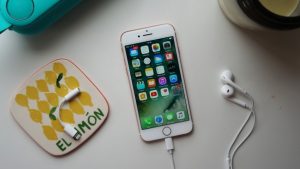
The main area of improvement, though, is in the loudness of the speakers. They pump out twice the volume of the iPhone 6S.
Are louder speakers a reason to upgrade? Probably not, but it’s one of the several things that, in aggregate, might add up to up to a reason to upgrade for you.
Finally, let’s deal with the big one: there’s no headphone jack on the iPhone 7. Instead, it’s encouraging headphone makers to design models that use the Lightning port instead, or go wireless.
Now, before your head explodes in incredulity, Apple includes a new pair of Lightning EarPods, and there’s also a 3.5mm-to-Lightning adaptor, so you don’t need to throw your current headphones away.
But there’s no denying that if you have a good set of traditional headphones that you like to use in lieu of Apple’s rubbish default ones, the iPhone 7 makes things more awkward for you than the iPhone 6.
iPhone 7 vs iPhone 6 – Display
The iPhone 7 continues to use the same IPS LCD screen technology as the iPhone 6, rather than OLED as in Samsung’s Galaxy S7 range. It’s also the same 4.7-inch size and 1334 x 750 resolution as its ancestor. But don’t let that fool you – the iPhone 7 display is noticeably better.
Like the iPad Pro, the iPhone 7 display supports the DCI-P3 colour gamut, which basically means it can display a greater number of colours. No one ever complained about richer, more realistic colours.
It’s 25% brighter with end-to-end colour management for more accurate colour reproduction. It’s also less reflective, so it’s better all-round for outdoors viewing.
Related: Best iPhone 7 Deals & Contracts
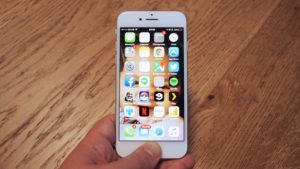
Apple’s improvements mean that the iPhone 7 renders things like skin tones much better than the iPhone 6, which makes it better for viewing Netflix videos on the go. It’s the best example of an IPS LCD we’ve seen.
In the iPhone 6’s favour, it has a slightly cooler tone to it that manifests itself in whites, which we prefer to the slightly pinkish tone of the iPhone 7. But that’s purely a matter of preference, and most people won’t even notice.
iPhone 7 vs iPhone 6 – Performance
Every year brings performance improvements, but it’s hard to understand them in isolation. For example, the new Apple A10 Fusion chip has four cores that consists of two high-performance cores that run twice as fast as the iPhone 6; and this is paired with two high-efficiency cores. These run at just one fifth of the power of the high-performance counterparts.
But this is fairly meaningless, especially if you don’t use demanding apps such as video editors and games. Do you need a 50% faster phone to check your email? Probably not.
More interesting is the RAM – OK, bear with me here. The iPhone 6 only has 1GB of RAM, whereas the iPhone 7 has 2GB. This means more stuff is held in memory, which is faster than reloading it all over again. For example, more RAM means your favourite apps will more often open in the state you left them, rather than restarting.
Related: iOS 10 – What’s new?

It’s particularly useful when web browsing with lots of tabs. More RAM means more tabs can stay open in the background, rather than reloading when you open them. It’s a small thing, but something you’ll notice if you make the switch.
All in all, the iPhone 7 is significantly faster than the iPhone 6, but this will manifest itself as a slight (but noticeable) increase in all-round snappiness if you make the upgrade. The phone will unlock quicker, the camera will boot up and snap quicker, and you’ll be able to switch between open apps quicker.
If you play loads of games or hate it when tabs reload, such an upgrade makes a whole lot of sense. But the main performance advantage is in future-proofing – the iPhone 6 is probably right at the end of that period where it feels genuinely swift, whereas the iPhone 7 will almost certainly run iOS 11 and iOS 12 (and their attendant apps) very well indeed.
iPhone 7 vs iPhone 6 – Software
As we’ve just hinted at, the iPhone 6 runs exactly the same iOS 10 operating system as the iPhone 7. This degree of consistency and future-proofing is one of the perks of iPhone ownership.
There is a bit of a split with iOS 10, though, when it comes to 3D Touch.
Apple has utilised the touch-sensitive technology it introduced in the iPhone 6S much better in its latest mobile operating system. While we wouldn’t say there’s a two-tier approach here, iOS 10 is definitely more usable on the iPhone 7 than it is on the iPhone 6.
Related: iPhone 7 colours
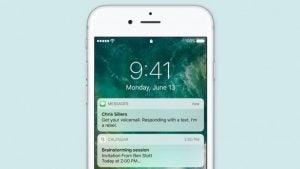
For example, you can preview emails and messages on the lock screen simply by pressing firmly on the notification. You can also jump to additional options by pressing hard on app and Control Centre icons. Going back to the iPhone 6 after the iPhone 7 feels a little strange, like something’s missing.
iPhone 7 vs iPhone 6 – Camera
If you take lots of photos then the iPhone 7 will be a good upgrade with its 12-megapixel camera and 6-element lens construction. You’ll also find optical image stabilisation (OIS) and a larger f/1.8 aperture lens.
This compares favourably with the iPhone 6’s 8-megapixel camera, lack of OIS, and f/2.2 lens.
All of which means that photos taken with the iPhone 7 are brighter, sharper, steadier, and more colourful. It’s a significantly better performer in low light, too – even before you have taken into account the improved True Tone flash system, which utilises double the number of bulbs of the iPhone 6 camera.
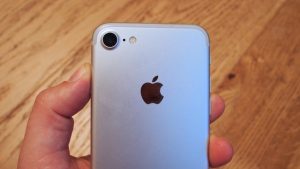
True, the iPhone 7 lacks the second 12-megapixel telephoto lens of the iPhone 7 Plus, which enables a degree of optical zoom. But that second camera is generally inferior to the first, so we don’t think you’re missing out on all that much in terms of quality.
Finally, don’t forget that the iPhone 7’s front-facing camera is a decent improvement over the iPhone 6. While the iPhone 6 has a 1.2-megapixel FaceTime camera, the iPhone 7 has a 7-megapixel sensor with auto image stabilisation for superior selfies. It also supports the clever flash feature introduced on the iPhone 6S, which uses the screen as a flash when taking selfies, but it’s now 50% brighter.
iPhone 7 vs iPhone 6 – Battery life and storage
Apple claimed you’ll get two extra hours from the iPhone 7’s battery over an iPhone 6S, which already had better battery performance than the iPhone 6. But our own use begs to differ.
It might be larger at 1960 mAh versus 1810 mAh, but we still frequently failed to get through a full day of moderate to heavy usage with the iPhone 7. The iPhone 6, when brand new, could typically be stretched out until bed time.
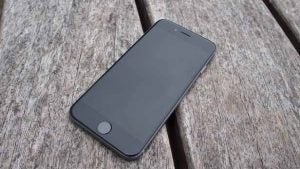
Of course, those upgrading from an iPhone 6 will be using diminished units that no longer hold a charge as well as when new, so an upgrade to the iPhone 7 will likely still be an improvement. But we were expecting much more of Apple in this regard – particularly with that new, energy-efficient A10 Fusion CPU.
On a more positive note, Apple has done away with the 16GB base model option in the iPhone 7. Storage now starts at 32GB and jumps all the way up to 128GB and 256GB. The iPhone 6 was only available in 16GB, 64GB and 128GB versions, so you get a lot more space for your stuff.
Related: Best iPhone 6 deals
iPhone 7 vs iPhone 6 – Verdict
It’s obvious to anyone that new phones aren’t as exciting as they used to be. If you’re looking at your iPhone 6 and thinking it’s still pretty handy, that’s because it is. It was a great phone two years ago and it’s still a good one now.
Whether you should upgrade or not will depend on what you care most about. If you’re a relatively light user, you won’t benefit much from the performance improvements and you may as well stick with what you have.
What’s more, anyone who uses their phones heavily will need to think twice about buying a new iPhone that will struggle to get you through anything approaching full day. Own and use a prized pair of premium headphones? That experience isn’t going to be as good with the iPhone 7, either.
Anyone who loves taking photos, however, should definitely consider upgrading. It adds some great new features and takes noticeably better photos in all conditions.


